Miracle prairie
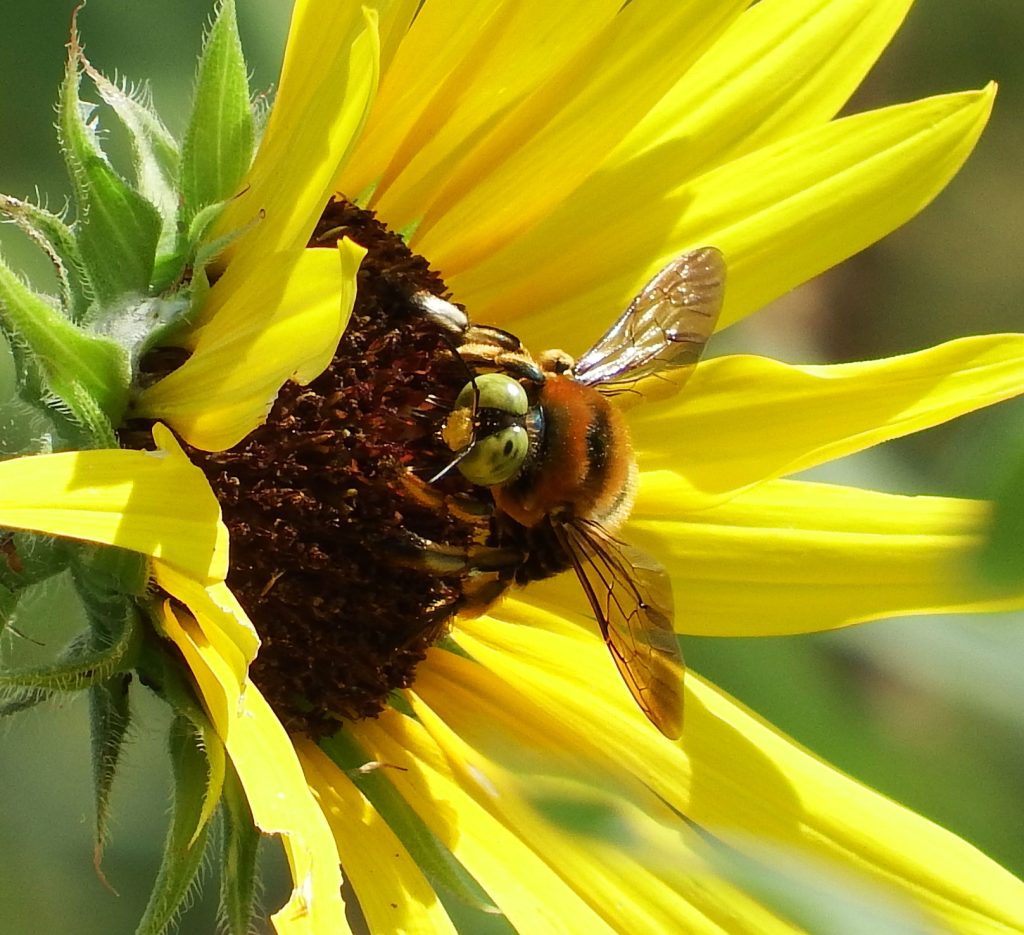
This southern carpenter bee is as large as a bumblebee and get a load of those eyes!
It is perhaps a sign of advancing age, but I often ask myself about the purpose of this and that. Life, emotions, the entire living enterprise that is Earth. This is a blog about a park, so don’t expect big answers, but from the unique perspective of a minor nature blogger, the purpose of everything seems to be more of everything. Everything wants to expand as far as its circumstances and abilities will allow. More flowers, more bees, more birds, more bacteria, more trees, more mice, more snakes, more people.
The only reason that there isn’t more of some living thing is that they ran out of food, got eaten, got out-competed for food or nest sites, or got sick and died (which is really just a form of predation by living bacteria and viruses).
Largely because of our amazing success as a species, many of the critters we share this space with have found it increasingly difficult to find enough food and nest sites. They have been out-competed for these resources by us! Because, I believe, we are fundamentally good, we have noticed this and are making efforts to expand the resources available to living things not human. We have learned the value of native plants and their ability to nurture bees and butterflies. We have learned the value of clean water not just for drinking but for the continuation of aquatic life.
One of the most life-promoting ecosystems you could imagine is a coastal prairie. That’s what Houston (and everything from the coast to basically I-10, from Baton Rouge to Corpus) was before European settlers arrived. We had been a coastal prairie for over 20,000 years. It was money in the bank, and we cashed it in to build Houston.
Now, Houston is trying to return the favor by replacing some of those prairies in order to jump start the engine of abundance that is the coastal prairie. Buffalo Bayou Park is an important part of this initiative. But less than a year after we expended great effort and expense to seed prairie plants into the Park, Harvey came and dumped 70,000 tons of silt on the barely growing prairie. Prairies can be underwater for long periods. They are made for that. But buried under tons of silt? Who knew.
Now, I do. Prairies have won.
Just after Harvey, I thought it might be an interesting project to select the most silt-blasted part of the Park I could find and track what happened as plants recolonized the area. I chose a hillside east of Shepherd on the north side of the bayou as the most barren ground in the Park and watched. A year went by and I forgot to pay attention.
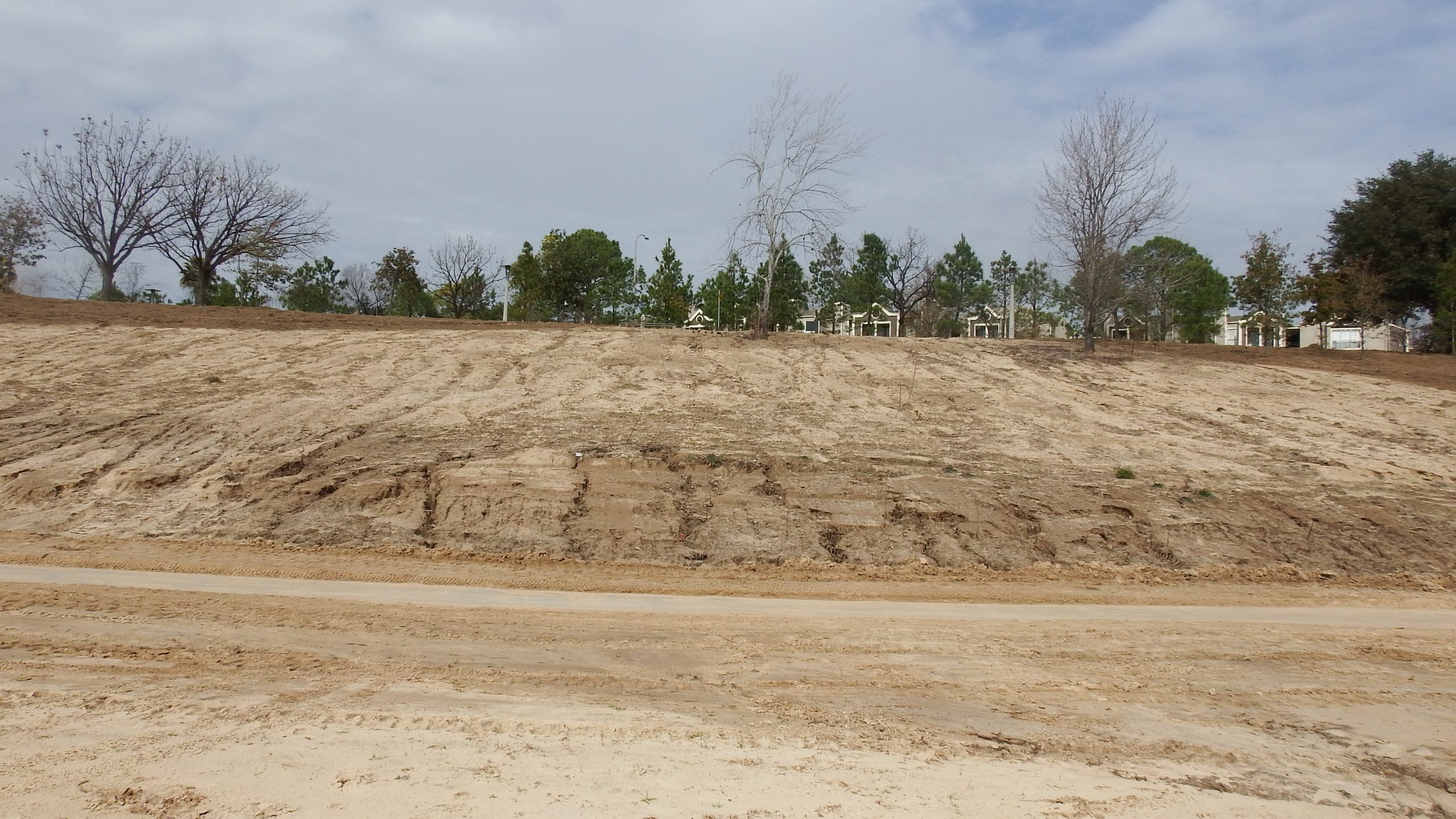
This is our hillside in January, 2018. Still just a field of silt.
This spring, the western side of that blasted hillside erupted in bluebonnets. Excellent! Bluebonnets are plants that fix nitrogen in poor soil and make it better.
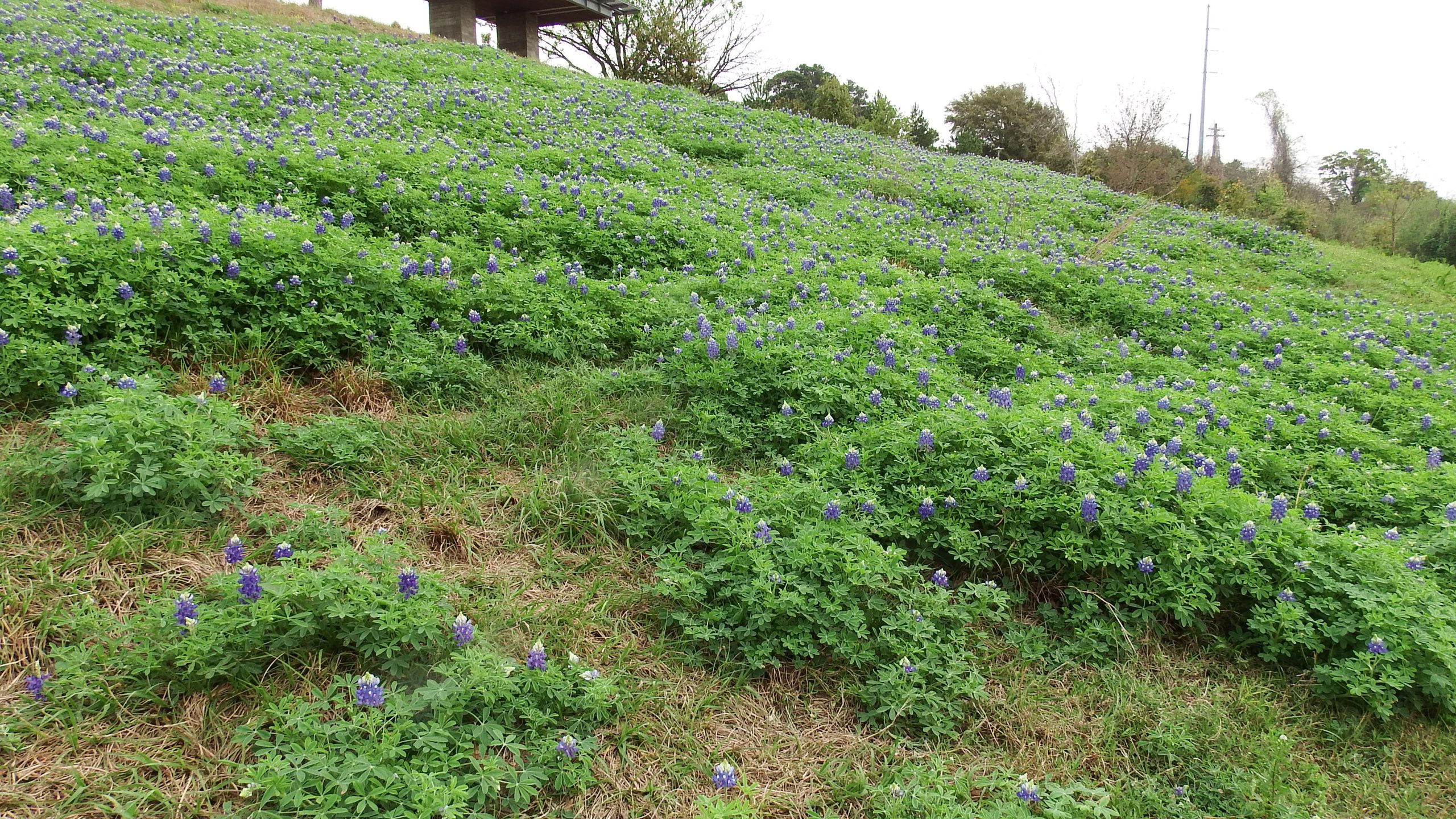
This spring, the western side of the hill was covered in bluebonnets.
But so much more was waiting just below the ground. I didn’t know until today.
Close to the the path, the hillside is a tangled mass of common sunflowers, horseweed and trailing fuzzy-bean vines. I admit that I was a little reluctant to wade in, but I am so glad I did.
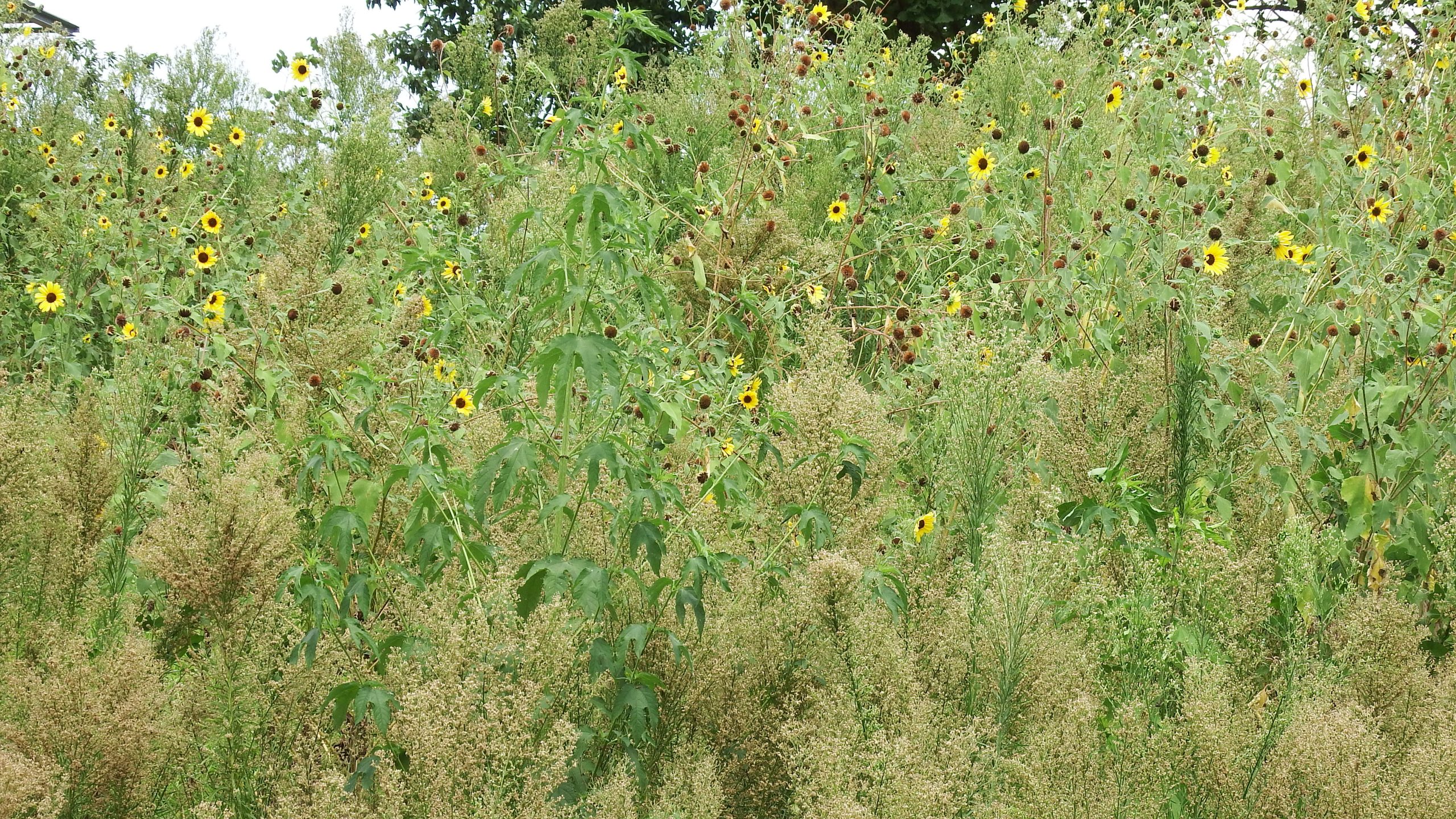
The path edge of the prairie is a daunting tangle of horse weed and common sunflowers.
The middle and top of the hillside is thick with Prairie plants. In riotous abundance. Indian Grass, Little Bluestem. Something that might be brownseed paspalum. Frog fruit, common sunflowers, fuzzy-bean, bumble bees, wasps, birds, butterflies, a grasshopper the size of my fist. And that’s just from spending an hour. I would have stayed longer but it was too hot for this woman.
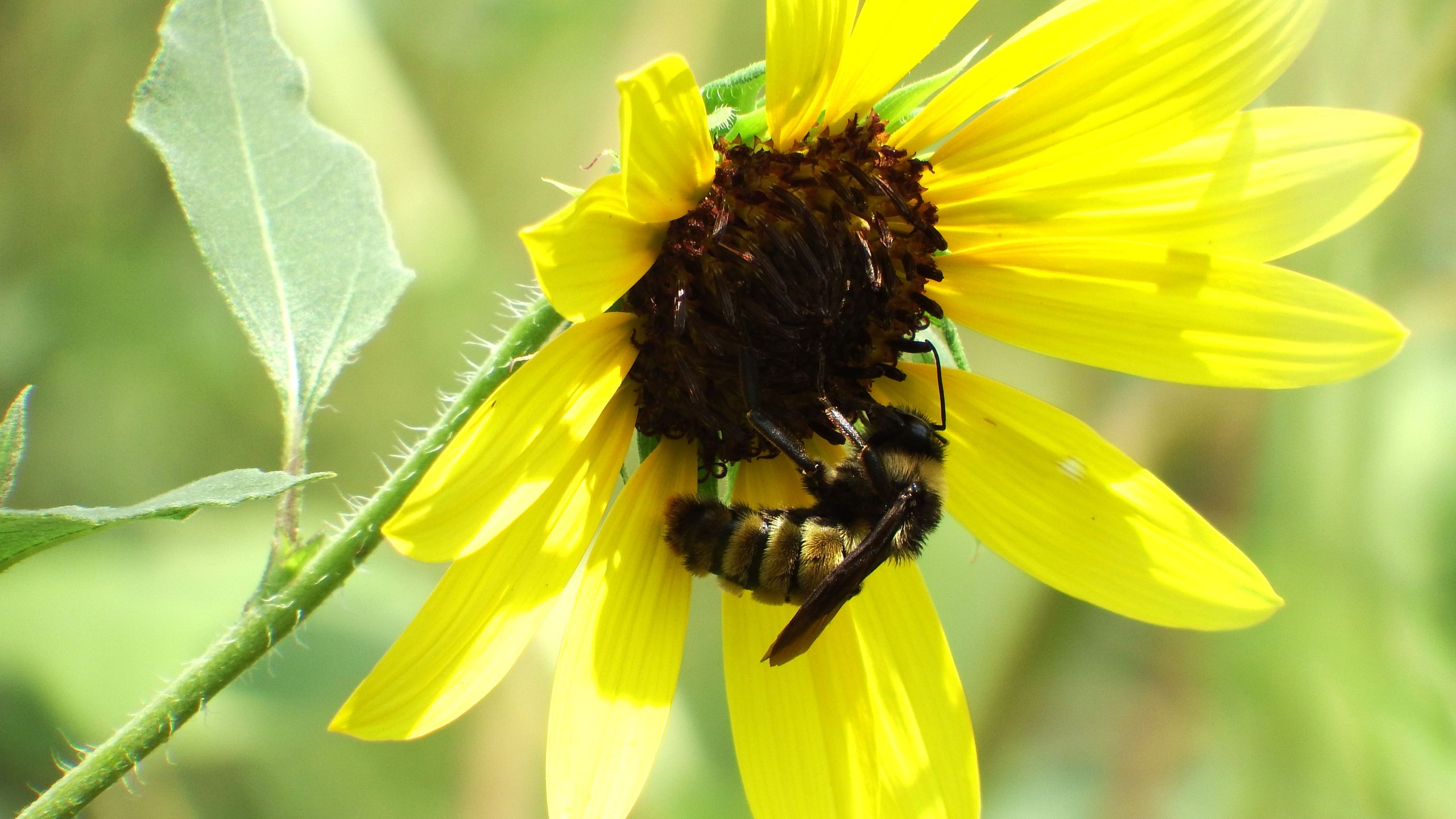
An honest to goodness bumblebee. First one I have seen in the Park.
I had identified two areas in the Park with abundant prairie grasses and flowers. Now, I can point to a third — my blasted hillside. From worst to first in two years. There is a power in nature and if we just give it a tiny bit of room to breathe, the result can pretty much knock you over.
This hillside isn’t much to look at right now, but wait. And it’s not just how beautiful it will be, it’s that in an hour, I saw the first bumblebee I’ve found in the park. Bumblebees are in such steep decline they are endangered. Trying to follow the bumblebee, I ended up getting a photo of that stunning carpenter bee at the top of this post. I don’t have photos of most of the things I saw, but I was visited by a downy woodpecker, a Carolina wren, a house finch and many many grackles. The density of insect and bird life was singular. I have never had quite so many things flying and crawling around as I did during that hour. A prairie is so very alive. I know that these photos can’t do it even a bit of justice, but wait. That prairie is going to knock your socks off very soon.
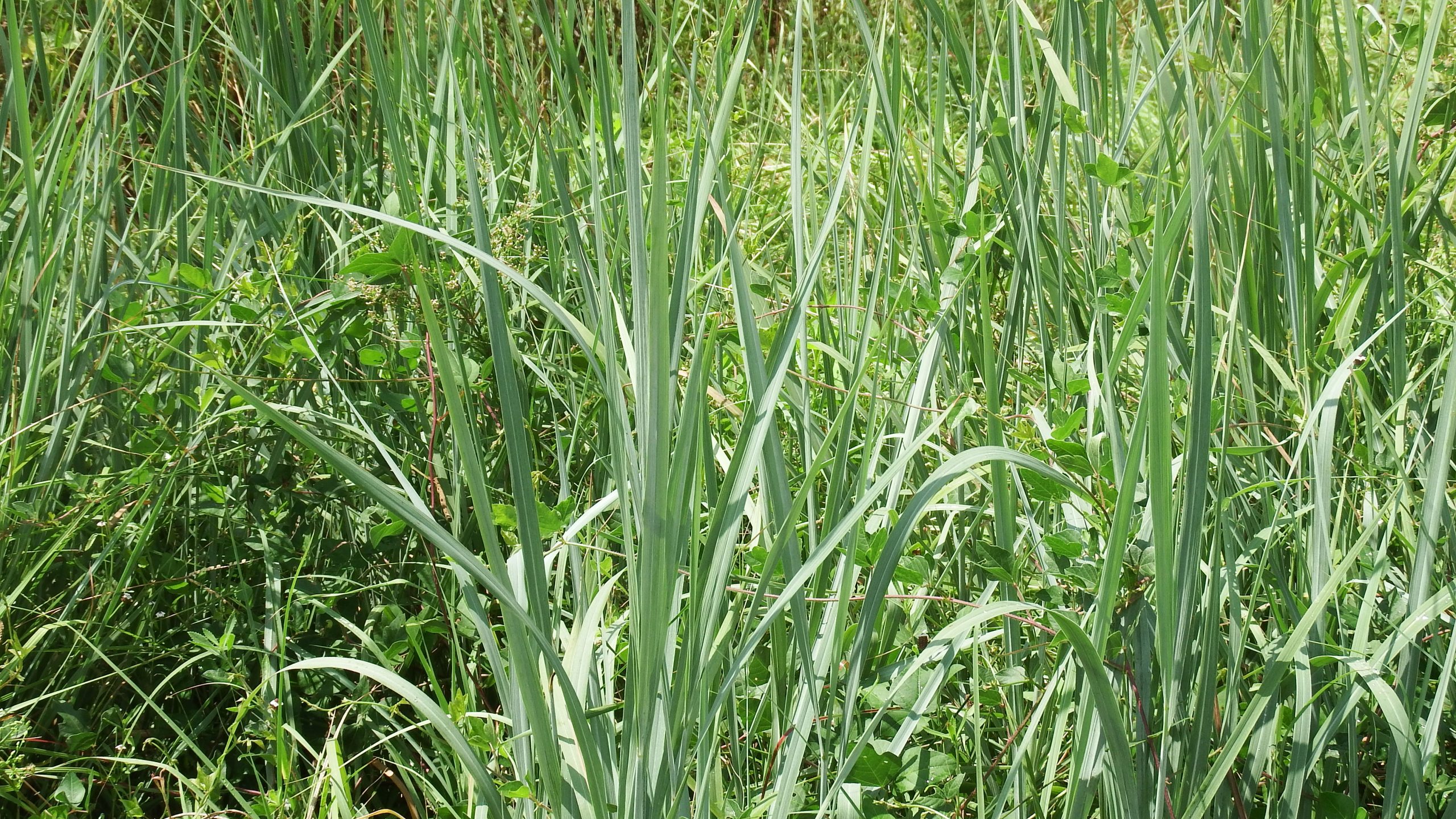
Indiangrass is an important native species. It’s a beautiful silvery blue/green when it’s growing and gets lovely yellow flowers at the end of the summer.
If you want to know more about prairies and how the history and development of Houston interconnects with this amazing landscape, join me for a monthly eco-history walk. Third Saturday of every month at 10:30 am. Sign up here.

